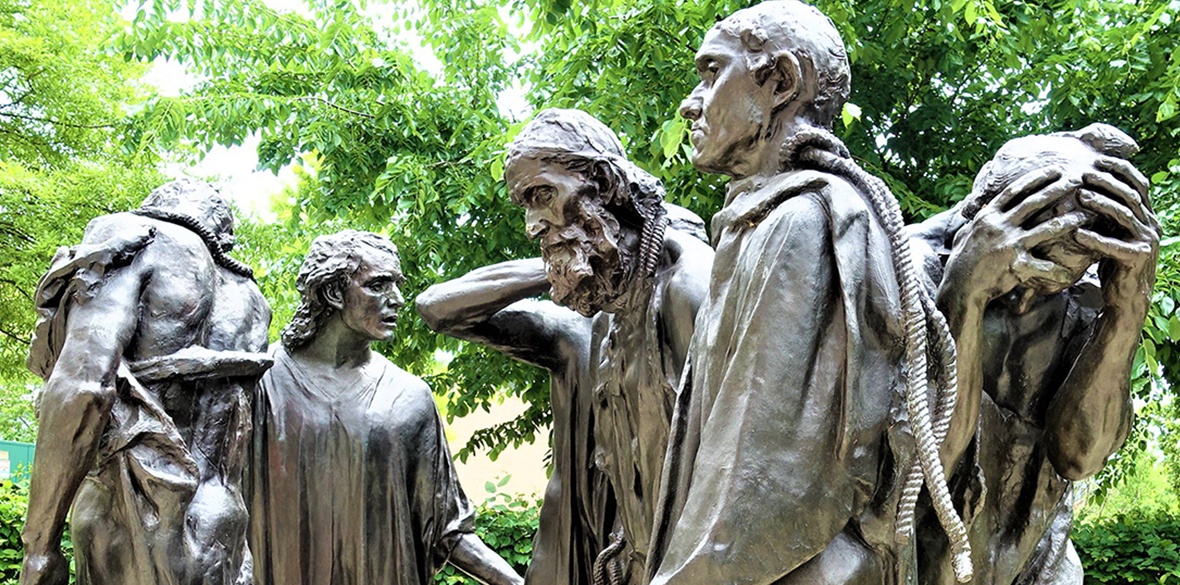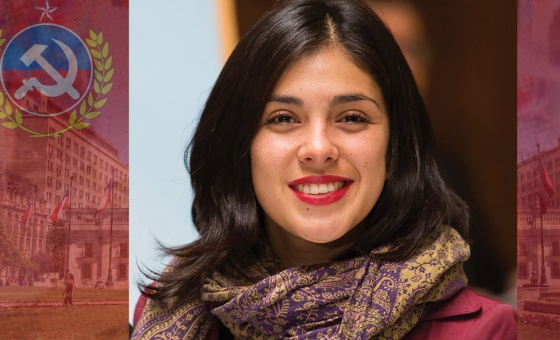This is the last article you can read this month
You can read more article this month
You can read more articles this month
Sorry your limit is up for this month
Reset on:
Please help support the Morning Star by subscribing here
ON AUGUST 2, 1347 an 11-month-long siege of Calais by the English ended.
Edward III had laid siege to the town and Philip VI of France ordered the port’s garrison to hold out at all costs. Philip failed to lift the siege and starvation eventually forced the citizens to parley for surrender.
For the French, the Calais episode was one of humiliating defeat: but for the English it marked the beginning of a victorious end to the 100 Years War.
The capitulation agreement stipulated that six of the town’s prominent burghers formally and voluntarily surrender into the custody of Edward, to be done with as he pleased.
In an intended humiliation, Edward demanded the keys to the town be handed over by these luminaries “stripped to their shirts, heads uncovered, barefoot and a noose around their necks,” according to a contemporary chronicler. Their hanging was averted when Edward’s wife, Philippa of Hainault, intervened.
The population of Calais was expelled, a wealth of spoils was grabbed by the English and the town was quickly repopulated with English settlers. It was not recaptured by the French until 1558.
In 1884 the town decided to commemorate the surrender. Sculptor Auguste Rodin’s design was selected from the symbolic six works submitted by six sculptors.
His intention was not to “idealise the dignity of their heroic sacrifice [but] reveal their misery and inner doubt” and he invested the sculpture with a potent emotive charge as well as a sense of physical movement revolutionary at the time.
Four of the figures stand at the points of an innovative rectangular cubic composition that articulates both the separateness of individuals immersed in inner dramas and personal anguish. Yet its compactness evokes a cohesive unity with a tangible shared purpose.
When walked around, the sculpture reveals Rodin’s mastery in subtly capturing both stillness and motion which, by way of contrast, animate the group. For Rodin, the human body had to be so sculpted so as to “mirror the soul:” anatomy was but a vehicle.
He had many detractors — contemporary critics and devotees of classicism saw his works as unfinished sketches, rough and offensively fragmented, too impressionistic or too naturalistic. Yet it is precisely the way his “rough” surfaces employ light to define and animate form that is groundbreaking, providing a complex and satisfying aesthetic experience.
Another radical first was his insistence on placing the burghers directly on the pavement to recreate the drama and immediacy of the original event when the six had to walk between their fellow citizens. He lost the argument and a customary pedestal was procured.
In 1924, after Rodin’s death, it was lowered to its current level of about two feet — almost, but not quite, as he wished.
Today, this masterly piece of art is located both in front of Calais City Hall and in Victoria Tower Gardens next to the Palace of Westminster in London.
Yet there is a sting in this tale. Away from the emotive narrative of Rodin’s splendid bronze, there may lie a telling example of 14th-century fake news, a myth swallowed by all for almost 700 years.
According to French medievalist Professor Jean-Marie Moeglin, the whole event was staged for the benefit of onlookers after some hard-nosed negotiations.
He asserts that the Calais military commander had negotiated with one of Edward’s representatives and it was only when reprieve from execution was assured by a royal pardon that the burghers agreed to perform the theatrical surrender.
They wore nooses round their necks but, Moeglin explains, they were escorted by the town’s men-at-arms in a procession that was a customary ritual on such an occasion, entirely orchestrated and not in the least heroic.
And documents unearthed in 1766 by Louis-Georges Brequigny showed that the bearded Eustache de Saint-Pierre, the first to volunteer, was at the time generously rewarded by Edward.
As Mark Twain once remarked: “Never let the truth get in the way of a good story” or, in this case, a good sculpture.












